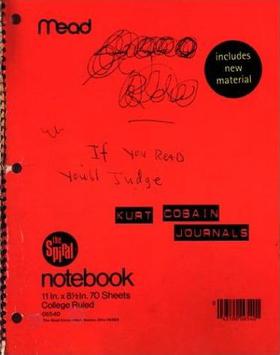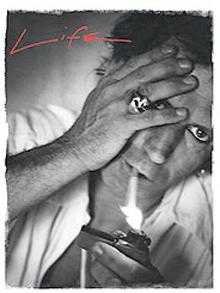Ramone, Johnny (2012) Commando, The Autobiography of Johnny Ramone, New York: Abrams Image
Commando, the posthumously published autobiography of Johnny Ramone is 176 pages of fun and insight into the lifespan of the guitarist from one of the most influential bands in the history of rock and roll music. It’s almost indisputable that the Ramones invented Punk Rock and Johnny makes no bones about that in his autobiography.
Commando is just like a Ramones song, fast paced, fun, furious, sometimes sad, sometimes silly and a bit cynical. It’s full of dozens of photos and images from throughout his life and career. Many of these had never been published before. At the end Johnny rates each Ramones album from best to least best.
Johnny’s early life and upbringing come across just like classic Americana at least until the rebellion kicks in, but that’s probably just as American as any of it. He was born John Cummings in Queens, New York on October 8, 1948. His father was a steamfitter. He loved baseball, the New York Yankees and Mickey Mantle. He played on teams well into high school before the rebelliousness kicked in.
Johnny was raised Irish Catholic and attended Catholic schools as a child until he showed his mother the marks from where the nun had been hitting him. He changed schools and quit attending church, but still considered himself Catholic to the day he died. He voluntarily went to military school during first half of high school, but just as with baseball the rebellious spirit growing inside him brought this to an end and he returned to public school where he was more comfortable.
Johnny originally became interested in rock and roll through the man who changed the records on the juke box at his parents’ bar and would give him the old 45s. Back then he was into Elvis, Jerry Lee Lewis and Little Richard.
In his late teens he started drinking heavily and getting into fights and vandalism. He was on a bad path to nowhere, and then one day just changed his mind. He quit drinking more than two beers a day and otherwise would just smoke a bit of cannabis and went out and got a union job with the company his father worked for. Eventually he started the Ramones, mostly on a bet with future drummer Tommy because he bragged about how he could play guitar in a successful band.
Johnny’s anger and violence is an early theme in the book. Johnny had a temper and could be easily irritated. By page 10, which is only the second page of Johnny’s actual text, he describes punching his future band mate and singer Joey because he showed up late to leave for the movies. He smacked bassist Dee Dee in the head multiple times while on tour for dawdling at road stops. He also punched former Sex Pistols manager Malcolm McLaren at the Whiskey a Go Go in Los Angeles in 1988 for talking to his girlfriend.
Johnny confirms one of the many amusing Ramones legend from the early days of the band and how they often had fights on stage over various performance issues. He describes their earliest days in a manner that illustrates a group of poor working class street kids who didn’t have much in the way of diplomatic skills, but a lot of passion. The Ramones certainly were punks. Johnny summed up the Ramones image by saying “The Ramones hinged on aggression, and balanced with the cartoon-like fun that so many seemed to see in us.”[p11]
Johnny mentions that he always felt like people were uncomfortable around him. He later decribes how he liked to irritate his band mates by playing Rush Limbaugh loudly over their tour van’s radio. Johnny was pretty conservative especially for a punk. He loved Ronald Reagan and was instrumental in developing the very American identity that was part of the band’s image. He hated foreign travel, especially in France, but he did enjoy Spain and Italy. He eventually enjoyed touring South America when the band became extremely popular there.
Tensions ran high in the band from the beginning. Johnny seemed exasperated as he expressed that he could not relate to Joey, and called him a pain in the ass and a hippie. Even after retirement when Joey was diagnosed with lymphoma, Johnny says he called Joey to check on him, and the former Ramones singer acted flippant about it, so he didn’t try reaching out again. He would go weeks without speaking to drummer Marky even while on tour and traveling in a cramped van. Looking like a brotherhood was part of the image of the Ramones, but the reality was a little less romantic.
Johnny was serious about the music and the image of the Ramones, but he didn’t take his own fame and legendary status too seriously. That was in large part due to the fact that he didn’t even realize he was such an inspiration to so many bands until he was close to retirement in the early 1990s. He seemed surprised that musicians from bands like Pearl Jam, Soundgarden and the Red Hot Chili Peppers looked up to him. As these then up and coming bands were on the same tours with the Ramones they would come up to him at shows and profess their admiration. At first he was perplexed. Then he was amused.
The Ramones retired 1996, and Johnny was the only member who didn’t go on to doing anything else musically. He couldn’t see playing with any other band than the Ramones. A year later he was diagnosed with prostate cancer. He hated how retirement, aging and his illness had softened him up to the point he didn’t even have the energy to be angry anymore. Johnny Ramone, a true punk. The last few pages of Commando become very poignant as Johnny states the likelihood that the he would be dead before it is published. And so it was.
Johnny was good friends with Lisa Marie Presley and almost walked her down the aisle when she married Nicholas Cage, but instead stood beside Cage as the Best Man. And like a true king of rock and roll, the daughter of the late, great Elvis was by his bedside when he died on September 15, 2004. Other friends in attendance included Eddie Vedder, John Frusciante, and Rob Zombie.
Lisa Marie Presley wrote the epilog to Johnny’s autobiography. She described the events around his final hours and his cremation as “very much like an Irish Wake and exactly the way Johnny would have wanted it to be.”
She said he was a good friend, a legend, loyal, “and well … he was grouchy :)”
Commando, The Autobiography of Johnny Ramone is a must read for any fan of the Ramones, punk rock, or rock and roll.





